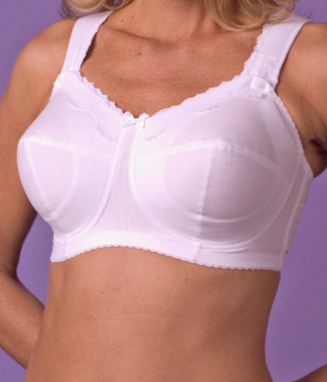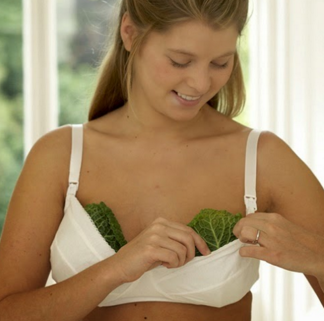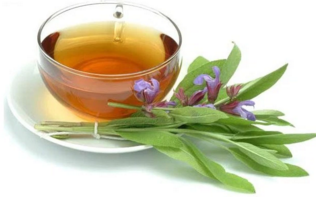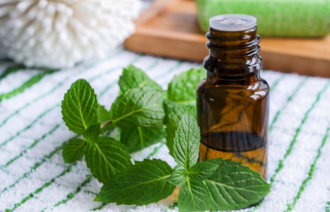When you stop breast-feeding immediately, your breasts will continue to produce milk for quite some time, even if the baby is no longer nursing, and weaning abruptly causes certain physical changes. You could develop mastitis, an inflammation in the breast due to a bacterial infection, and you will also experience a sudden drop in the hormone levels prolactin and oxytocin, which may add to your feelings of depression. But don't worry, there're ways to stop the milk production and avoid any potential problems associated with it.
How to Stop Breast Milk Production
Wean Your Baby Gradually
Start reducing baby to one or two breast feedings a day, and work your way to completely wean baby. This is the safest and most painless way to slowly stop producing breast-milk. Breast-feeding that is suddenly stopped, can cause your breasts to become engorged, painful, and even put you at significant risk for developing mastitis.
If you have been pumping, this typical schedule can wean you off your pump slowly, and safely:
First day: pump 5 minutes every 2 to 3 hours
Second day: pump 5 minutes every 4 to 5 hours
Days 3-7: pump just long enough to relieve discomfort
Wear a Supportive Bra
You can help to compress the breasts and slow milk production with a high-impact sports bra, but be careful not to get one that’s too tight. A support bra that is too tight may cause clogged milk ducts, which can lead to mastitis. Wear a supportive bra no tighter than you would wear for a sporting activity. When wearing a supportive bra, avoid the under-wire bras, because the wire may also lead to clogged ducts and infection.
Apply Cabbage Leaves
Want to know how to stop breast milk production using cabbage leaves? Cabbage contains an enzyme that helps naturally dry up your milk. Place a head of green cabbage in the refrigerator to keep it cold and fresh. When you’re ready, peel off two leaves and crush them using a rolling pin and place one leaf on each breast, inside a supportive bra. Replace with fresh cabbage leaves from the fridge when they become wilted and warm.
Drink Sage Tea
Sage tea or tincture, which contains a natural form of estrogen, works to decrease the production of breast-milk. Just add 1 teaspoon of rubbed sage to a cup of hot water and let it steep 15 minutes. You can add some milk or honey to cut the bitterness. If you prefer, you can opt for a sage tincture purchased from a health food store in place of the tea. The tincture is more readily absorbed into the body, so it is more efficient at decreasing your milk supply. Start with one cup of sage tea three times a day, or two droppers full of sage tincture three times daily, and increase the dosage levels as necessary to achieve the desired results.
Try Peppermint Essential Oil
Peppermint oil helps a lot when purposefully weaning a baby off of breast milk, because peppermint oil decreases the milk supply. Wanting to know how to stop breast milk with it? Put 3-5 drops of peppermint oil in a cup of water or herbal tea.
Peppermint oil is also very cooling, and can provide topical relief to swollen breasts during this transitional period. Just dilute 5-7 drops of peppermint oil in 1 teaspoon of carrier oil, and gently massage onto breasts to soothe soreness from breast engorgement.
Things You Should Avoid
Avoid Breast Binding
Binding is one of the least effective means of lactation suppression. In the past, women often bound their breasts with restrictive bras or bandages in an attempt to stifle milk production, while speeding up lactation suppression. Medical experts no longer support breast binding, as it causes pain, swelling, and might increase the risk of infection.
Do Not Stimulate Nipple
Do not stimulate nipple areas because your body might mistake any type of touching as your baby’s feeding, and may trigger your hormones to keep producing milk. Opt for loose clothing that is less likely to show milk spots, and consider wearing nursing pads to absorb leaking milk.
Never Dehydrate
If you’re thinking how to stop breast milk production by decreasing your water consumption, it will not work! In fact, reducing your water intake will only lead to dehydration, which in turn increases your risk for a breast infection. So keep drinking plenty of water.
Don’t Take Hot Shower
You’ll want to abstain from hot showers because the heat will stimulate more milk production, opt for warm showers instead. Try turning your back to the shower head, and avoid letting the water beat directly on your breasts, especially if they are already tender.
How Long Will It Take?
The process of drying up your milk can take a few days, up to a few weeks, depending on how long your body has been producing milk. As a general rule, the longer you have been nursing, the longer it is going to take to dry up your milk. It’s not uncommon for some mothers being able to express small amounts of breast milk long after their babies have stopped breast-feeding.








View All Comments /Add Comment